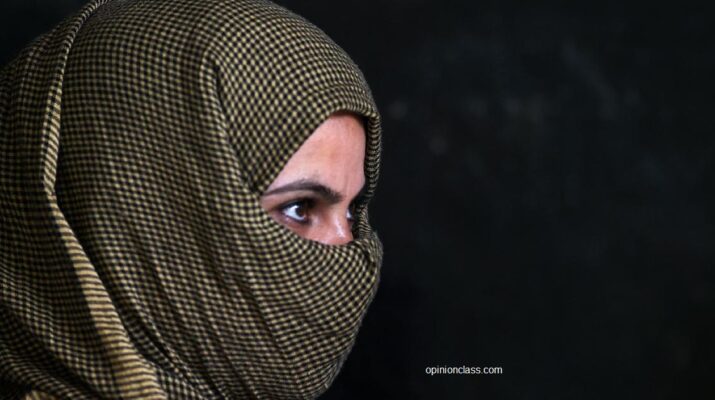Over the last few years, the ongoing hijab controversy have generated a range of arguments, questions about the complex relationship of Muslim women with hijab. A Full Bench of the High Court further held that prescription of school uniform by the State is a reasonable restriction of the students’ rights under Article 25 , the Government Order issued by the Karnataka government dated February five is not violative of their rights.
The debate over hijab have backed again last month after a college in Karnataka stopped hijab-wearing Muslim students from entering in the classroom. The controversy over wearing hijab inside the classroom was started from a college in Tamil Nadu’s Udupi on January 1 this year, and has been continuing since then. The heated controversy has been raging for more than a month with protests and counter-demonstrations by Muslim and Hindu students.
Wearing of hijab is not a part of Essential Religious Practice in Islamic faith and thus, is not protected under Article 25 of the Constitution, the Karnataka High Court has held today.
Claiming the right to wear Hijabs in classrooms comes under Articles 14, 19 and 25 of the Constitution, many Muslim students have filed several petitions in Karnataka High Court for which several hearings have been done.
Visuals of such groups menacing women students with hijab in few colleges have created a huge uproar across the world and the intellectuals such as Noam Chomsky have expressed deep concern at the turn of events, viewing such incidents as a reflection of rising Islamophobic vigilantism in India today.
The ongoing unrest in Karnataka over whether students should be permitted to wear hijab in educational institutions has caught the attention of many celebrities including veteran lyricist Javed Akhtar, actor Sonam Kapoor and ex-actor Zaira Wasim among others.
The Opinion Class has talked to the various experts, researchers, theologians, hijab-wearing students and teachers about the complexity of hijab.
Speaking with Opinion Class Farah Shahin, a research scholar, who is working on social-political reflections in Arab women’s fiction, said education has nothing to do with the dress code.
On school uniform, she said the school uniform establishes an uniformity among the students from different background. Uniform means equality (a particular dress code) and someone should not be any superiority over dress code. If some added an extra scarf in the existing uniform/dress code, so there should not be an issue, she said.
According to Shahin, the whole issue is only about to cover head and the covering or not covering of heads should not impact the education of Muslim women. For example, earlier, it was very difficult to work wearing masks but now it has become an essential part of our lives, she said.
If we go to Mandir, Masjid and Gurudwara, we cover head by a piece of cloth. Similarly, if the school is a temple of education so why can’t we cover heads by a scarf or a piece of cloth, she said.
In her MPhil topic Islamic Faminsim: faith and gender in the work of fatima mernissi, Shahin describes that the hijab as having three-dimensional meaning and all are often blend into one another.
The first is visual meaning to hide something from the sight. Two verses of Quran deal with the hijab-verse 31 of chapter 24 and 59 of Chapter 33. Quoting Marnissi, she also mentioned in her MPhil dissertation that these verses of visual hijab are over exposed and became the basis of veiling.
The second dimension of hijab is spatial meaning to separate and to make a border between the private and public life. According to her, it is not to say that women are separated and invisible (fully covered) from the public sphere.
The third one is ‘ethical’ which means Muslims dressed modestly. It does not apply only to women. Talking about solution of the hijab controversy, Shahin said the religious harmony should not be disturbed. Instead of dress code, the education should be the top most priority of the Muslim parents.
Syed Qamrul Islam, assistant professor at the department of Arabic, AMU, said that hijab is an Arabic word which means to stop, to resist and to prevent for something. Hijab is not only covers the body but also ensures the safety and security of an individual, he said.
He clearly said that there is no concept of dress code in Islam. The religion only directs to cover Satr-e-aurat, the parts of the body that must be covered and it is mandatory for all. However, there is no particular dress code in Islam but it should be covered in a civilized manner. According to him, hijab is a part of Islamic tradition and culture which ensures the dignity of a women.
Dr Marya Naim, Assistant Professor and the personality development coach at IMS Engineering College Ghaziabad, said hijab to me is my faith, my modesty, it is a piece of cloth that makes me feel the essence of liberty and freedom of practice.
Naim also told the Opinion Class that she enjoys freedom of choice by wearing hijab and celebrate diversity, choice, and embrace freedom of practice. It is something that I wear to cover my hair and not my brain so even with it I am the most intellectual I ought to be, she said.
On the hijab controversy, Tarushikha Sarvesh, Assistant professor at the advanced Centre for Women’s Studies at AMU, said the controversy should make us revisit and rethink the purpose of schools and colleges. The fundamental objectives of educational institutions above all should be to impart education to inculcate critical thinking.
In a country where girls education needs special attention such malicious and despicable incidents prove to be even more detrimental. Women’s education must be prioritised by educational institutions despite the former’s religious obligations, she said.
Hence, the hijab has a very long history but has no fixed meaning as the Muslim women have covered their head in a variety of ways. However, after the controversy, the hijab, which was seen as an instrument of oppression, has acquired new socio-political meaning in India.
Karnataka remains on the boil over the hijab row. On one hand, a BJP minister demanded to investigate hijab row in the murder of 25-year-old Harsha, a member of the right-wing Bajrang Dal. More than 12 people were detained for questioning and all of them have criminal record, the Karnatak police said.




